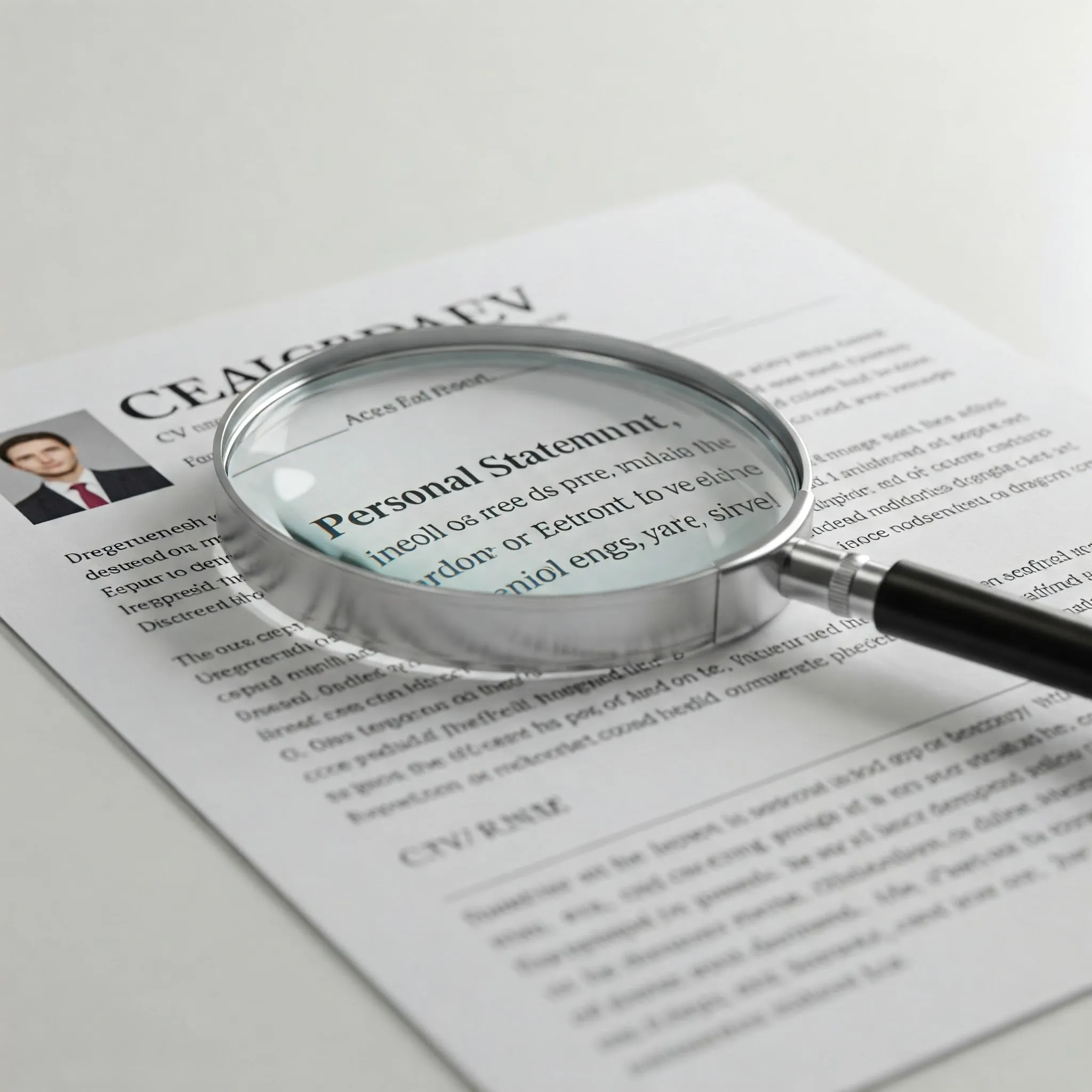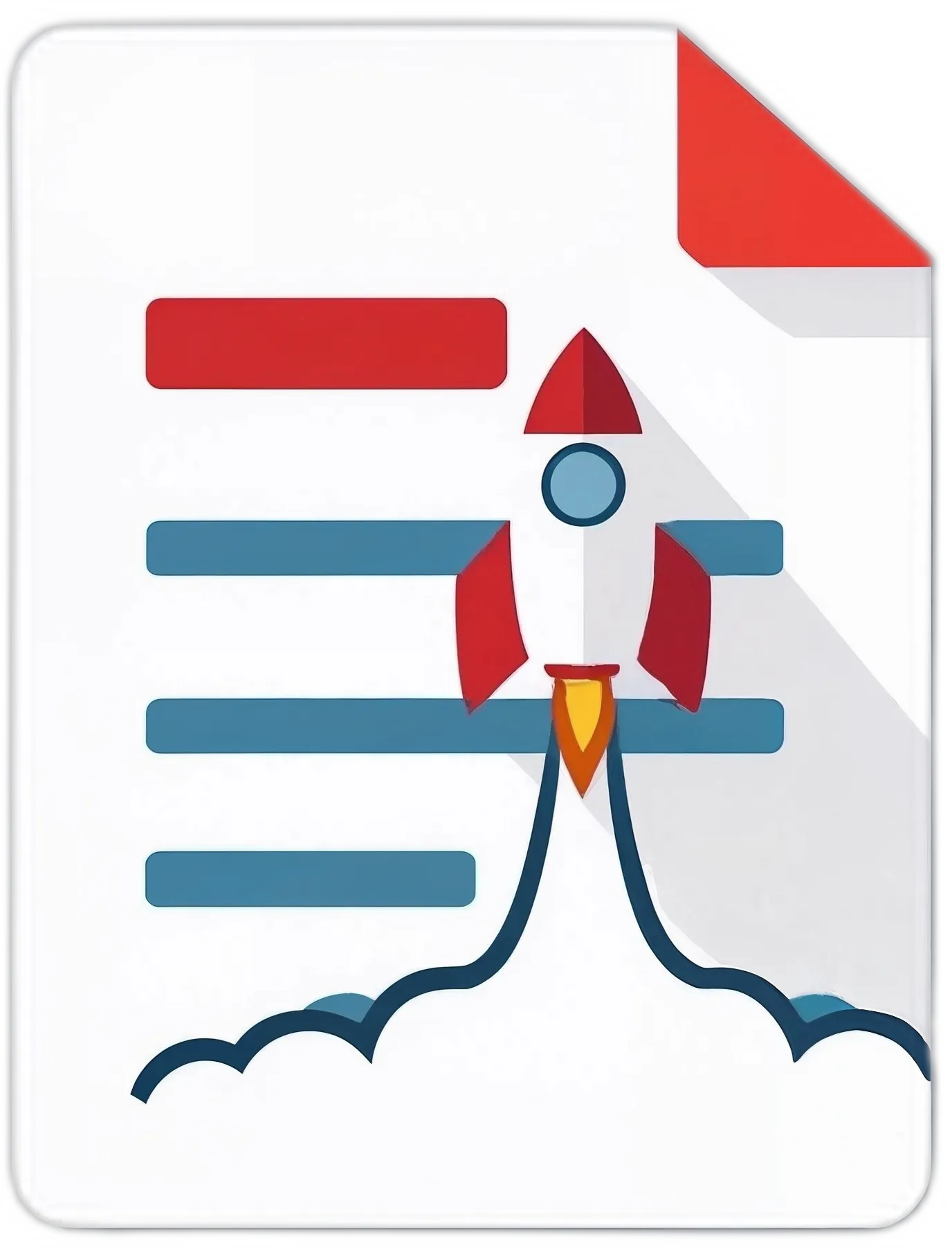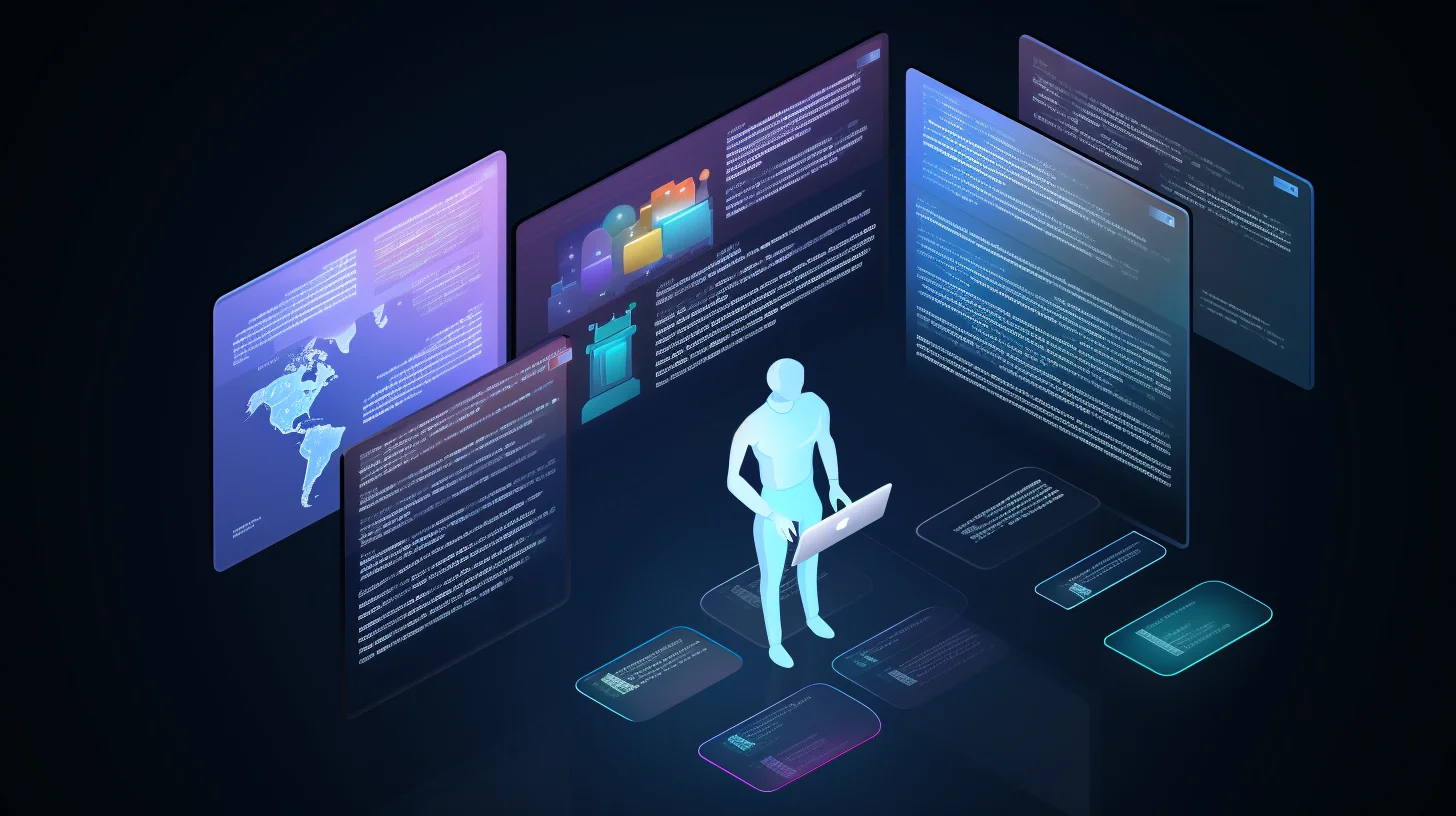The Importance of a Strong Personal Statement on Your CV

In the hyper-competitive landscape of the modern job market, your Curriculum Vitae (CV) is more than just a historical record of your employment; it's your primary marketing document, your ambassador in absentia. Within this crucial document, one section stands paramount in shaping the initial perception of potential employers: the personal statement. Often underestimated, this concise introductory paragraph is the gateway to your professional story, holding the power to captivate a recruiter's attention or condemn your application to the 'no' pile within seconds.
Also known by various names - personal profile, career summary, opening statement, or executive summary - this element sits strategically at the apex of your CV, typically just below your contact information. Its fundamental purpose, as highlighted by numerous career experts is to serve as a potent, distilled overview of who you are professionally. It encapsulates your key skills, core competencies, most relevant experience, and career aspirations in a compelling narrative designed to immediately signal your suitability for a specific role. Think of it as the ultimate "elevator pitch" or, as some suggest, a direct "sales pitch" for your candidacy, setting the stage and providing context for the detailed information that follows in your work experience and education sections.
In certain job markets, particularly the UK, its inclusion isn't just recommended; it's often considered an essential, non-negotiable component. It functions as an extended tagline for your professional brand, offering a memorable snapshot designed to intrigue the reader and encourage them to invest more time in your application. Crucially, its effectiveness hinges on its specificity; a generic, one-size-fits-all statement dilutes its impact. True power lies in meticulous tailoring for each unique job application, ensuring it directly addresses the employer's needs and the requirements of the role. It is a focused summary of your most pertinent professional background, educational achievements, future goals, and core strengths, carefully curated to align with the opportunity at hand, not an exhaustive life story.
This article will delve deep into the multifaceted importance of the personal statement, exploring its definition, distinguishing it from similar concepts, understanding its vital role in the application process, examining how recruiters leverage it, dissecting the anatomy of an effective statement, guiding you through the crafting process, highlighting common pitfalls, and providing best practices for length, format, and tailoring. By understanding and mastering this critical CV element, you can significantly enhance your ability to make powerful first impressions and navigate the job search process with greater success.
Defining the Personal Statement: More Than Just an Introduction
While the concept seems straightforward - an introduction on a CV - understanding the nuances of the personal statement and differentiating it from related terms is crucial for crafting the most effective opening.
What It Is:
At its core, the personal statement is a brief, self-contained summary (typically a single paragraph) located at the beginning of your CV. It acts as a professional synopsis, designed to achieve several key objectives simultaneously:
- Introduce You: It provides a snapshot of your professional identity.
- Highlight Key Strengths: It showcases your most relevant skills and qualifications upfront.
- Summarize Experience: It offers a high-level overview of your career trajectory or relevant background.
- State Career Goals (Optional but often effective): It can indicate your ambitions and how they align with the potential role.
- Demonstrate Fit: Most importantly, it explicitly connects your profile to the requirements of the specific job you're applying for.
Its strategic placement ensures it's the first substantive content a recruiter reads after your name and contact details. This prime real estate demands content that is impactful, relevant, and immediately engaging.
Distinctions: Personal Statement vs. Objective vs. Summary:
The terminology surrounding CV introductions can be confusing, with terms like "personal statement," "resume summary," "career objective," and "personal profile" sometimes used interchangeably. However, subtle but important differences exist, primarily in focus:
- Personal Statement/Personal Profile/Resume Summary: These terms are largely synonymous in modern usage. They focus on the value you bring to the employer. They summarize your relevant skills, experience, and accomplishments, essentially answering the question: "Why should we hire you?" A profile might lean slightly more towards highlighting achievements, but the overall goal remains employer-centric - showcasing your suitability and potential contribution.
- CV Objective/Resume Objective: An objective statement, in contrast, focuses more on the candidate's goals and what they are seeking in a position or career. For example: "Seeking a challenging marketing role in the tech industry where I can utilize my digital campaign management skills." While once common, traditional objective statements are now often seen as outdated or less effective for experienced professionals because they emphasize the job seeker's needs rather than the employer's. However, they can still hold value for:
- Entry-Level Candidates: Individuals with limited experience can use an objective to clearly state their career direction and enthusiasm.
- Career Changers: It can signal the desired new field and highlight transferable skills or relevant aspirations.
- Highly Specific Roles: If applying for a very niche position or program (like graduate school), an objective might clarify intent.
The key takeaway is the shift in emphasis: objectives are about your wants, while statements/summaries/profiles are about their needs and how you meet them. For most job applications today, the employer-focused summary/statement approach is strongly preferred as it immediately addresses the recruiter's primary concern: finding the best fit for their vacancy.
The "Sales Pitch" Analogy:
The comparison of a personal statement to a sales pitch is apt. In a limited time, you need to convince the "buyer" (the recruiter or hiring manager) that your "product" (your skills, experience, and potential) is the right solution for their "problem" (the job vacancy). It requires understanding your audience (the employer and their needs outlined in the job description), highlighting your unique selling propositions (your key skills and achievements), and presenting them in a persuasive, concise manner. It's your opening argument, designed to make them want to learn more.
The Indispensable Role: Why Your CV Needs a Strong Opening Statement
In the rapid-fire world of recruitment, where hiring managers may sift through hundreds of applications for a single opening, the personal statement plays several critical roles that extend far beyond a simple introduction. Its inclusion is not merely a formality; it's a strategic necessity.
1. Mastering the First Impression:
This is arguably the most crucial function. Research and anecdotal evidence consistently show that recruiters spend mere seconds - often cited as six to ten seconds - performing an initial scan of a CV. In this minuscule window, they decide whether to read further or discard the application. The personal statement, positioned prominently at the top, is your first, and potentially only, chance to make a positive impact and capture their interest. A compelling, well-written statement immediately signals professionalism, relevance, and competence, encouraging the recruiter to invest more time in reviewing the details of your experience and qualifications. Conversely, a weak, generic, or error-filled statement can be an instant disqualifier.
2. Highlighting Immediate Relevance:
Job descriptions outline specific skills, experiences, and qualifications the employer is seeking. The personal statement provides the perfect platform to explicitly demonstrate your alignment with these requirements from the outset. Instead of forcing the recruiter to hunt through your entire work history to connect the dots, you present a tailored summary that speaks directly to their needs. By customizing the statement for each application, you show that you haven't just mass-applied but have carefully considered the role and genuinely believe you are a strong fit. This targeted approach signals diligence and genuine interest, qualities highly valued by employers.
3. Providing a Concise Professional Summary:
Beyond immediate relevance, the statement serves as a high-level executive summary of your entire professional profile. It distills your most significant qualifications, core competencies, key achievements, and career level into a digestible format. This allows recruiters to quickly grasp the essence of your candidacy - your main strengths, years of relevant experience, and areas of expertise - without needing to immediately delve into the chronological details. Including quantifiable achievements (facts and figures) within this summary can make it significantly more powerful and credible.
4. Setting the Tone and Conveying Personality:
While a CV is a professional document, the personal statement offers a rare opportunity to inject a hint of your personality and professional ethos. The language you use, the skills you emphasize, and the aspirations you mention can convey enthusiasm, drive, and cultural fit. It allows you to frame your application, setting a positive and confident tone that can resonate throughout the reader's perception of your entire CV. It offers a glimpse into your motivations and what drives you professionally, making your application more memorable and three-dimensional than a simple list of jobs and duties.
5. Showcasing Career Goals and Ambition:
Incorporating your career aspirations, even briefly, helps employers assess your long-term potential and alignment with the company's growth opportunities. It demonstrates foresight and ambition. By understanding your goals, a recruiter can better gauge if the role offers a suitable trajectory for you, potentially indicating a higher likelihood of retention and engagement if hired. This forward-looking element adds another layer of strategic fit beyond just matching current skills to current requirements.
6. Surviving the Applicant Tracking System (ATS) and Initial Screen:
Many companies use Applicant Tracking Systems (ATS) to parse CVs and filter candidates based on keywords. A well-crafted personal statement, tailored to include relevant keywords from the job description, significantly increases the chances of your CV passing this initial automated screening phase and reaching human eyes. For the human recruiter performing the subsequent manual screen, the statement acts as the primary tool for quickly deciding who makes the initial shortlist.
In essence, the personal statement acts as a powerful filter and focusing lens. It guides the recruiter's attention, highlights your most compelling attributes immediately, and frames the narrative of your professional journey in the most favourable and relevant light possible for the specific opportunity. Neglecting it means missing a critical opportunity to control the narrative and make a strong, immediate case for your candidacy.
The Recruiter's Lens: How Hiring Managers Utilize the Personal Statement
Understanding how recruiters and hiring managers actually use the personal statement during the screening process underscores its importance and provides valuable insights into how to craft an effective one. They aren't just reading it passively; they are actively using it as a decision-making tool.
1. The Primary Filtering Mechanism:
Faced with potentially hundreds of applications per role, efficiency is paramount for recruiters. The personal statement is their first line of defence against information overload. They scan this section rapidly to make an initial judgment call: Does this candidate meet the basic requirements? Do they seem like a plausible fit? Is their profile relevant enough to warrant further investigation? A statement that is generic, poorly written, irrelevant to the role, or contains errors can lead to the CV being immediately set aside, regardless of the qualifications buried deeper within the document. It's a harsh reality driven by volume and time constraints.
2. Rapid Identification of Key Skills and Qualifications:
Recruiters need to quickly ascertain if a candidate possesses the core competencies required for the job. The personal statement should ideally function like a "greatest hits" compilation of the applicant's most relevant skills and qualifications. By summarizing these upfront, you save the recruiter valuable time and effort they would otherwise spend extracting this information from the detailed work history. They look for keywords and skill phrases that match the job description, confirming baseline suitability before committing more time to a deeper review.
3. Gauging Career Trajectory and Ambition:
The statement provides a quick snapshot of a candidate's career level, area of expertise, and professional direction. Is this a junior candidate eager to learn, a mid-level professional ready for more responsibility, or a senior leader with strategic experience? Mentioning career goals, even briefly, helps the recruiter assess not just immediate fit but also potential long-term alignment with the company's needs and opportunities. Does the candidate's ambition match the scope of the role and the potential pathways within the organization?
4. Assessing Professionalism and Attention to Detail:
The quality of the personal statement itself serves as an indicator of the candidate's professionalism, communication skills, and attention to detail. A well-structured, concise, and error-free statement suggests a meticulous and capable individual. Conversely, typos, grammatical mistakes, or awkward phrasing can create a negative impression, raising concerns about the candidate's overall competence and care in their work.
5. Evaluating Personality and Enthusiasm:
While subtle, the tone and language used in the personal statement can offer clues about the candidate's personality, work ethic, and level of enthusiasm for the role. Words conveying proactivity (e.g., "drove," "initiated," "managed"), achievement (e.g., "increased," "optimized," "delivered"), and genuine interest can make a candidate stand out. Recruiters are looking for individuals who are not only qualified but also motivated and likely to be a positive addition to the team.
6. Contextualizing the Rest of the CV:
A strong personal statement acts as an effective primer, setting the context for the information that follows. It helps the recruiter understand the narrative thread connecting the different roles and experiences listed later. By establishing the candidate's core strengths and career focus upfront, the recruiter can more easily interpret the significance of the detailed points in the work history and skills sections.
In summary, recruiters use the personal statement as a multi-purpose diagnostic tool. It helps them filter efficiently, identify key qualifications quickly, understand career context, evaluate professionalism and potential fit, and decide whether to invest further time in reviewing the full application. It's a critical hurdle that every application must clear.
Anatomy of an Effective Personal Statement: The Building Blocks of Impact
Crafting a personal statement that successfully navigates the recruiter's scrutiny and makes a positive impact requires careful consideration of its core components and attributes. An effective statement is a blend of strategic content and polished presentation.
Key Components & Attributes:
- Conciseness and Clarity: Brevity is paramount. The statement must convey its message quickly and clearly. Long, rambling paragraphs will lose the reader's attention. Aim for a focused message, typically within a range of 50-200 words, often distilled into 3-5 impactful sentences. Every word should serve a purpose. Use clear, straightforward language, avoiding jargon where possible unless it's industry-standard and relevant to the role.
- Relevance and Tailoring: This is arguably the most critical element. A generic statement is ineffective. Each personal statement must be customized for the specific job you are applying for. Analyze the job description, identify the key requirements and desired attributes, and reflect these directly in your statement. Use language that mirrors the employer's terminology. This demonstrates that you've read the requirements carefully and understand what the employer is looking for.
- Highlighting Key Skills and Achievements: Don't just list skills; showcase them. Mention your most relevant technical skills, soft skills, and areas of expertise that align with the job. Crucially, back these up with context or evidence, ideally through achievements. Instead of saying "Strong communication skills," you might incorporate it implicitly: "Articulate and results-oriented Marketing Manager with 8+ years of experience developing and executing integrated campaigns that increased lead generation by 30%."
- Quantifiable Results (Where Possible): Numbers add significant weight and credibility to your claims. Whenever possible, quantify your accomplishments. Use percentages, monetary figures, timeframes, or other metrics to demonstrate the impact you've made in previous roles. Examples: "Managed a budget of €500k," "Reduced process time by 15%," "Led a team of 10," "Successfully launched 3 new products."
- Clearly Defined Career Aims (Optional but Recommended): Briefly stating your career goals or what you are seeking in your next role demonstrates ambition and direction. Ensure these aims align logically with the position you're applying for. This helps the employer see how the role fits into your professional development, suggesting better potential retention. Example: "Seeking a challenging Project Manager role where I can leverage my PMP certification and experience in agile methodologies to deliver complex software projects."
- Honesty and Authenticity: While you want to present yourself in the best possible light, never exaggerate or fabricate skills or experience. Discrepancies are often easily discovered during interviews or background checks, which can immediately disqualify you. Be confident in your actual abilities and achievements. Authenticity often resonates more than hyperbole.
- Action-Oriented Language: Use strong action verbs to describe your experience and achievements. Words like "developed," "managed," "led," "implemented," "increased," "achieved," "negotiated," "created," and "optimized" convey proactivity and impact more effectively than passive language or simple lists of duties.
- Professional Tone: Maintain a professional yet engaging tone. Avoid overly casual language, slang, or negativity. The tone should reflect confidence and enthusiasm for the opportunity.
Illustrative Structures (Templates):
While tailoring is key, common structures can provide a starting point:
- Structure 1 (Experience-Focused): "[Job Title/Profession] with [Number] years of experience in [Key Area 1] and [Key Area 2]. Proven ability to [Quantifiable Achievement 1] and [Quantifiable Achievement 2]. Seeking to leverage expertise in [Specific Skill/Area] to contribute to [Company Goal/Type of Role] at [Company Name]."
- Structure 2 (Skills-Focused): "Highly motivated and results-driven [Your Field] professional with core competencies in [Skill 1], [Skill 2], and [Skill 3]. Experience includes [Brief Example of Relevant Experience/Accomplishment]. Eager to apply [Specific Skill] and [Another Skill] to the [Job Title] position to help [Company Name] achieve [Specific Company Objective]."
- Structure 3 (Career Changer): "Accomplished [Previous Profession] with [Number] years of experience excelling in [Transferable Skill 1] and [Transferable Skill 2]. Recently completed [Relevant Training/Certification] in [New Field]. Passionate about transitioning expertise in [Relevant Previous Skill] to a [New Job Title] role, contributing strong [Key Transferable Strength] abilities to [Company Name]."
These are just frameworks; the specific content must always be adapted based on your profile and the target job description.
Crafting Your Statement: A Practical Step-by-Step Guide
Writing a compelling personal statement requires introspection, research, and careful composition. Follow these steps to create a statement that effectively showcases your value:
Step 1: Self-Reflection and Inventory
Before you write a single word, take stock of your professional self:
- Identify Core Strengths: What are you genuinely good at? Consider both technical skills (e.g., Python programming, financial modeling, graphic design) and soft skills (e.g., leadership, communication, problem-solving, teamwork).
- Pinpoint Key Achievements: Think about specific accomplishments in your previous roles. What results did you deliver? When did you exceed expectations? Use the STAR method (Situation, Task, Action, Result) to flesh these out, focusing particularly on the quantifiable Results.
- Clarify Career Goals: What are you looking for in your next role? What are your short-term and long-term career aspirations? How does the target job fit into this picture?
- Define Your Professional Identity: How would you describe yourself professionally in one or two sentences? What makes you unique?
Step 2: Deconstruct the Job Description
This is the foundation of tailoring. Print out the job description or save it digitally and meticulously analyze it:
- Identify Keywords: Look for recurring nouns and verbs related to skills, responsibilities, qualifications, and required experience. These are likely keywords the ATS and recruiter will be scanning for.
- Distinguish Must-Haves vs. Nice-to-Haves: Pay close attention to phrases like "required," "essential," "must have," versus "preferred," "desired," "a plus." Your statement should prioritize addressing the essential requirements.
- Understand the Core Problem: What challenge is the company trying to solve by filling this role? How can your skills and experience provide the solution?
- Note the Language and Tone: Does the description use formal or informal language? Does it emphasize teamwork, innovation, or efficiency? Try to mirror the tone appropriately.
Step 3: Research the Company
Go beyond the job description. Visit the company's website, LinkedIn page, and recent news articles:
- Understand their Mission and Values: What does the company stand for? What is their overarching purpose? Showing alignment with their values can be a powerful differentiator.
- Identify Recent Successes or Challenges: Are they launching new products, expanding into new markets, or facing specific industry challenges? Mentioning awareness of these shows genuine interest and business acumen.
- Gauge Company Culture: Try to get a sense of the work environment. Is it collaborative, fast-paced, formal, innovative? Your statement's tone can subtly reflect this.
Step 4: Draft Your Statement - Focus on Key Messages
Now, start writing, keeping the ideal length (around 3-5 sentences, under 150-200 words) in mind. Don't aim for perfection on the first try. Focus on incorporating the key elements:
- Opening: Start with a strong statement identifying your professional role and key area of expertise or experience level.
- Body: Weave in 2-3 of your most relevant skills and a significant, quantifiable achievement, directly linking them to the requirements identified in Step 2. Use keywords naturally.
- Closing: Briefly state your career objective as it relates to this specific role or express your enthusiasm for contributing to the company, perhaps referencing their mission or a specific goal you learned about in Step 3.
Step 5: Integrate Keywords Naturally
Review your draft and ensure you've included relevant keywords identified from the job description. Don't stuff keywords awkwardly; integrate them smoothly within the narrative of your sentences. This helps both ATS systems and human readers quickly see the match.
Step 6: Refine, Edit, and Polish
This is where you elevate your draft to a polished statement:
- Check for Clarity and Conciseness: Is the message clear? Can any words or phrases be removed without losing meaning? Is it within the ideal length?
- Improve Flow and Readability: Does the statement read smoothly? Are the sentences well-constructed?
- Proofread Meticulously: Check rigorously for any errors in grammar, spelling, and punctuation (1). Even small mistakes can undermine your credibility. Read it aloud to catch awkward phrasing.
- Ensure Tone is Professional and Confident: Does it project the right image?
Step 7: Get Feedback
Ask a trusted friend, mentor, or career advisor to review your personal statement. A fresh pair of eyes can often spot errors or areas for improvement that you might have missed. Ask them specifically if it's clear, compelling, and relevant to the target job.
Tailoring for Different Scenarios: Adapting Your Message
The core principles of crafting a personal statement remain consistent, but the emphasis and specific content should adapt based on your career stage and circumstances.
1. Recent Graduates:
- Focus: Potential, enthusiasm, relevant academic achievements, internships, volunteer work, and transferable skills.
- Content: Highlight strong academic performance (mentioning degree and university), key projects or coursework relevant to the role, valuable skills gained through extracurricular activities or part-time jobs (e.g., teamwork, communication, time management), and a clear statement of career interest in the specific field or industry. Emphasize eagerness to learn and contribute.
- Example Snippet: "Enthusiastic and highly motivated recent Business Administration graduate (First Class Honours) from [University Name] with internship experience in digital marketing. Proven ability to manage social media campaigns and analyze performance data. Seeking an entry-level Marketing Assistant role to apply theoretical knowledge and develop practical skills at a dynamic company like [Company Name]."
2. Experienced Professionals:
- Focus: Specific accomplishments, years of relevant experience, leadership skills (if applicable), industry expertise, and quantifiable results.
- Content: Lead with your current or most relevant job title and years of experience. Showcase 2-3 major achievements directly related to the target role's requirements, using metrics to demonstrate impact. Mention key areas of expertise or specialized skills. Briefly state your next career step or how you aim to contribute in the target role.
- Example Snippet: "Results-driven Senior Software Engineer with 10+ years of experience specializing in backend development using Python and AWS. Proven track record of leading cross-functional teams to deliver scalable solutions, including reducing system latency by 25% for a high-traffic e-commerce platform. Seeking to leverage deep technical expertise and leadership skills in a challenging role at [Company Name]."
3. Career Changers:
- Focus: Transferable skills, motivation for the change, relevant recent training or projects, and enthusiasm for the new field.
- Content: Acknowledge the transition subtly. Highlight skills and experiences from your previous career that are highly relevant to the new role (e.g., project management, client relations, data analysis, communication). Mention any recent certifications, courses, or volunteer work undertaken to facilitate the change. Clearly state your passion and commitment to the new field and explain why you are making the change and targeting this specific role/company.
- Example Snippet: "Dedicated former Hospitality Manager with 7 years of experience excelling in client relationship management, team leadership, and operational efficiency. Successfully completed a comprehensive certification in Human Resources Management and seeking to transition strong interpersonal and organizational skills into an HR Coordinator role. Eager to apply a passion for employee development and process improvement within a people-focused organization like [Company Name]."
4. Specific Industries:
- Creative Fields: May allow for slightly more personality or unique phrasing, focusing on creativity, portfolio highlights, or specific artistic skills.
- Technical Fields: Often benefit from mentioning specific technologies, methodologies (Agile, Scrum), certifications, and quantifiable technical achievements.
- Academic CVs: Personal statements (often called Research Statements or Teaching Philosophies in this context) are typically much longer and more detailed, outlining research interests, publications, and pedagogical approaches. (Note: This is distinct from the standard professional CV personal statement).
Regardless of the scenario, the golden rule remains: always tailor the statement to the specific job description and company requirements.
Avoiding the Pitfalls: Common Mistakes in Personal Statements
Even with the best intentions, job seekers can fall into common traps when writing their personal statements. Being aware of these pitfalls is the first step to avoiding them:
- Being Too Generic: Using vague, non-specific language that could apply to anyone (e.g., "Team player with good communication skills seeking a challenging role"). This fails to differentiate you or highlight relevant qualifications. Avoidance: Focus on specific skills and achievements tailored to the job description.
- Relying on Clichés and Buzzwords: Overused phrases like "results-oriented," "dynamic," "think outside the box," or "detail-oriented" lose their impact and sound insincere. Avoidance: Show, don't just tell. Instead of saying "detail-oriented," mention an achievement that required meticulousness. Use strong, specific action verbs.
- Forgetting to Tailor: Sending the exact same personal statement with every application is a major error. Recruiters can spot generic statements easily, and it suggests a lack of genuine interest in their specific role or company. Avoidance: Always adapt your statement based on the job description and company research.
- Incorrect Length: Statements that are too long (over 200 words) risk losing the reader's attention. Statements that are too short (one or two brief sentences) may lack sufficient detail or impact. Avoidance: Aim for the sweet spot of 3-5 well-crafted sentences, typically under 150-200 words.
- Grammar and Spelling Errors: Typos and grammatical mistakes create an immediate negative impression of carelessness and lack of professionalism. Avoidance: Proofread meticulously. Use spell-check and grammar tools, but also read it aloud and consider asking someone else to review it.
- Including Irrelevant Personal Information: The statement should focus strictly on professional qualifications and aspirations. Avoid details about hobbies, family, or personal beliefs unless directly relevant (which is rare). Avoidance: Keep the content professional and focused on the value you bring to the employer.
- Using Negative or Self-Deprecating Language: Avoid highlighting weaknesses or apologizing for lack of experience. Frame your skills and experience positively. Avoidance: Focus on your strengths and what you can do, not what you can't.
- Plagiarism or Copying: Never copy a personal statement from an online example or another person's CV. It lacks authenticity, may not fit your profile, and can have serious consequences if discovered. Avoidance: Use examples for inspiration only. Write your statement in your own words, reflecting your unique background.
- Focusing on Duties, Not Achievements: Simply listing job duties (e.g., "Responsible for managing social media") is less impactful than stating achievements (e.g., "Managed social media channels, increasing engagement by 40% in six months"). Avoidance: Emphasize results and accomplishments, quantifying them whenever possible.
By consciously avoiding these common errors, you can ensure your personal statement presents you in the most professional, relevant, and compelling light.
Best Practices: Length, Format, and Placement
Finalizing your personal statement involves adhering to established best practices regarding its presentation on the CV.
Ideal Length: As previously mentioned, conciseness is key. The consensus points towards:
- Word Count: Typically under 150-200 words. Some sources might suggest slightly shorter (under 100 words) or longer, but the 150-200 range is a common and safe guideline for most professional roles.
- Sentence Count: Approximately 3-5 concise, impactful sentences.
- Paragraphs: Generally presented as a single, short paragraph.
The goal is maximum impact in minimum space, respecting the recruiter's limited time. Academic CVs are a notable exception where longer statements are standard.
Format:
- Paragraph Form: The standard and recommended format is a well-structured paragraph. It should read as a cohesive narrative summary.
- Bullet Points: Generally discouraged within the personal statement itself. Bullet points break the narrative flow and are better suited for the Skills or Work Experience sections where lists are expected. The statement aims for a summary, not a list.
- Voice: Writing in the first person ("I," "my") is common and generally accepted, making the statement more direct and personal. However, some prefer an implied first person (dropping the "I" - e.g., "Highly motivated Marketing Manager...") or even third person, although this can sometimes sound impersonal. Consistency is key; choose a voice and stick with it. First person or implied first person is most conventional for personal statements.
Placement: The personal statement has a standard, strategic location on the CV:
- Position: At the very top of the CV, immediately after your name and contact information.
- Order: It should precede all other sections, including Work Experience, Education, and Skills. This ensures it's the first thing a recruiter reads and sets the context for everything that follows.
Adhering to these formatting and placement conventions ensures your CV meets professional standards and that your compelling personal statement gets the immediate attention it deserves.
Conclusion: Your Strategic Advantage in the Job Market
In the intricate dance of job applications, the personal statement is your opening move - a brief but profoundly significant element that can dictate the course of your candidacy. It is far more than a mere formality; it is a strategic tool, an architect of first impressions, and a vital component of a truly effective CV.
As we've explored, a strong personal statement serves multiple critical functions: it grabs the recruiter's attention within precious seconds, immediately highlights your relevance for the specific role, provides a concise summary of your key qualifications and achievements, sets a professional tone, conveys personality and ambition, and helps navigate the initial screening processes, both automated and human. Recruiters rely heavily on this section to make swift initial judgments about suitability, professionalism, and potential fit.
Crafting an impactful statement demands careful introspection, meticulous research into the role and company, and precise writing. The hallmarks of excellence are conciseness, clarity, unwavering relevance achieved through tailoring, a focus on quantifiable achievements, honesty, and professional presentation. By understanding the anatomy of an effective statement, following a structured crafting process, adapting your message for different career scenarios, and consciously avoiding common pitfalls like generic language and errors, you can create an opening that truly resonates.
While it may only constitute a small fraction of your overall CV's word count, the weight it carries in the evaluation process is disproportionately large. Investing the time and effort to write a compelling, tailored personal statement for each application is not just recommended; it's essential for anyone serious about standing out in today's competitive job market. It is your prime opportunity to articulate your unique value proposition and convince potential employers that you are not just another applicant, but the ideal candidate they have been searching for. Master the personal statement, and you significantly enhance your chances of moving beyond the initial scan and securing that coveted interview.





